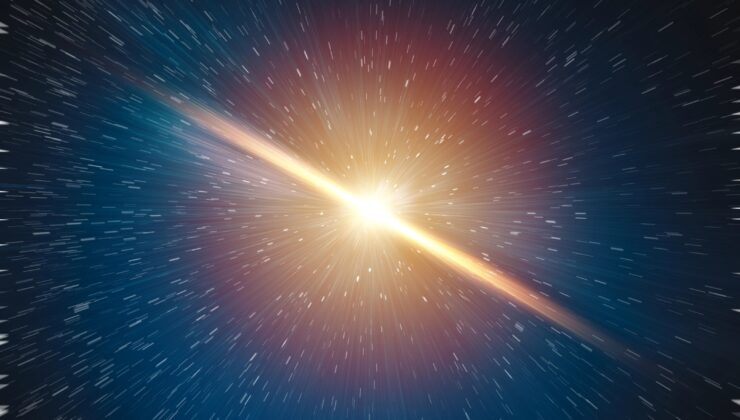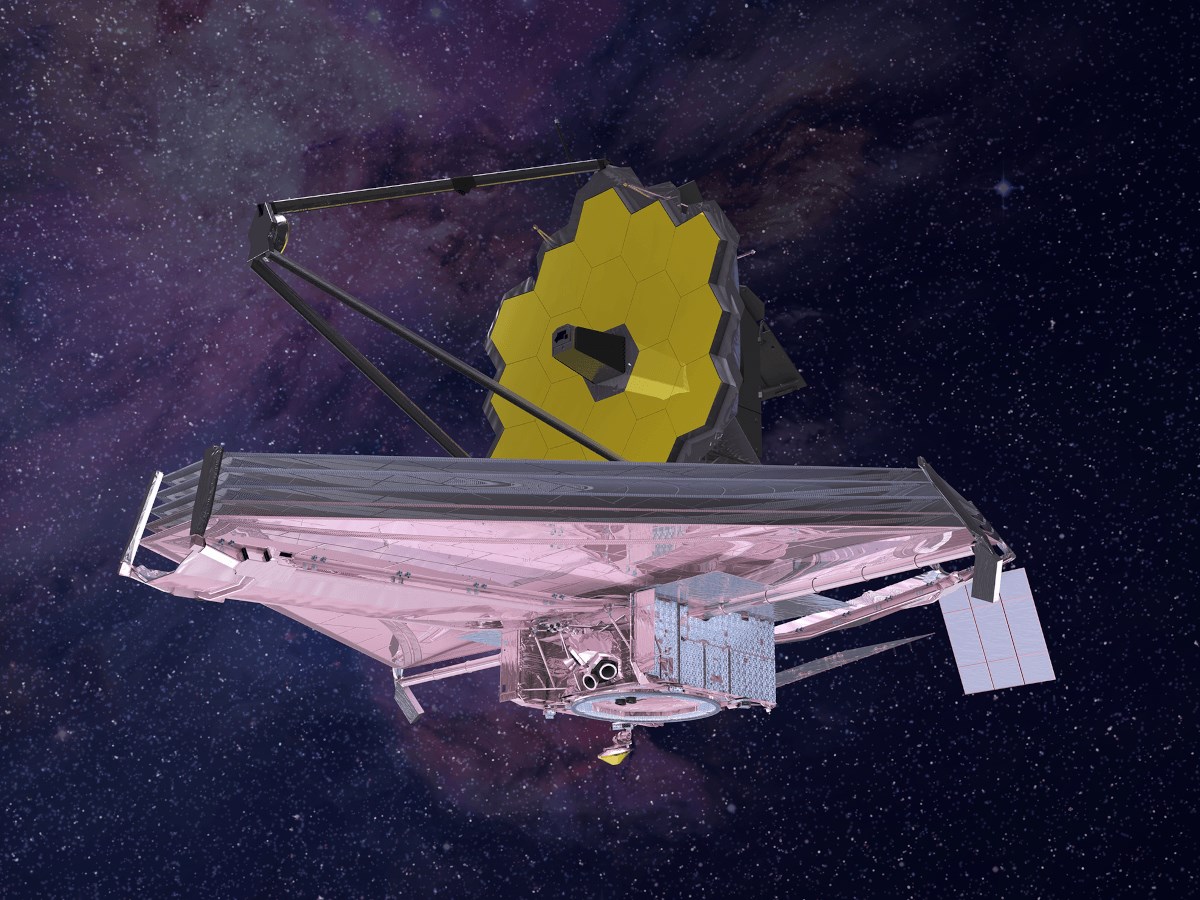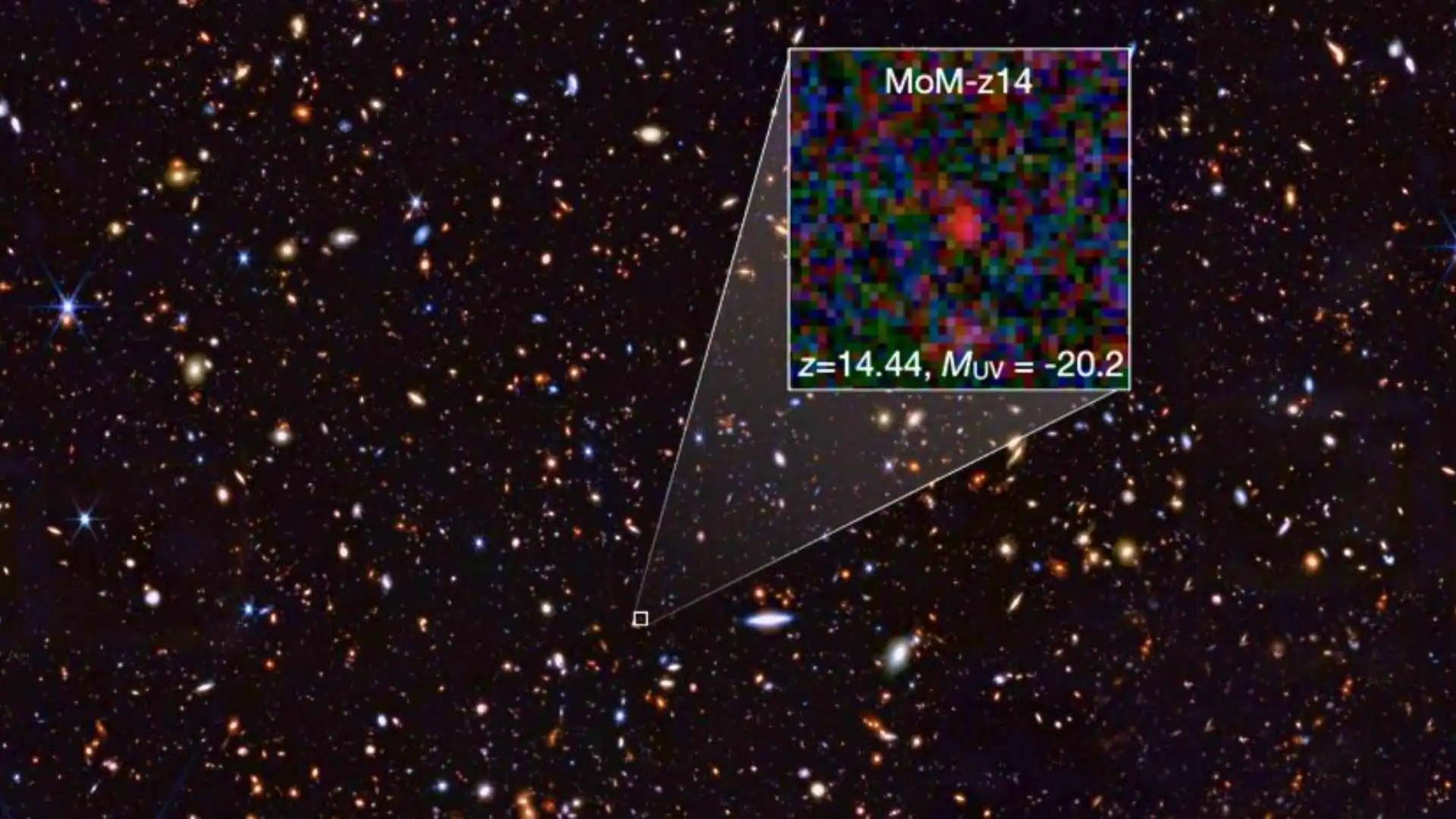

With the help of the James Webb Space Telescope (JWST), astronomers have identified the oldest and most distant galaxy ever recorded. This ancient galaxy, named MoM z14, is estimated to have formed a mere 280 million years after the universe’s inception. This remarkable discovery reveals that it predates JADES-GS-z14-0—previously considered the oldest galaxy—by 10 to 20 million years.

The universe is approximately 13.8 billion years old, placing the formation of MoM z14 at a very early cosmic time, shortly after the Big Bang. A crucial factor in this discovery is the concept of light travel time. As celestial objects are more distant, they appear as they were at earlier times. The light from MoM z14 has traveled 13.52 billion years to reach us, making it the most distant object humans have ever observed.

The James Webb Space Telescope, launched in 2021, has the capability to explore the universe’s farthest reaches due to its advanced infrared sensors. The redshift phenomenon, where light from distant galaxies shifts to longer wavelengths as the universe expands, is vital in estimating galaxies’ distance and age. The redshift value for MoM z14 was measured at z = 14.44, surpassing the previous record holder, JADES-GS-Z14-0, which had a redshift of z = 14.32.

MoM z14 is approximately 50 times smaller than the Milky Way and contains heavy elements like nitrogen and carbon. This composition suggests that, despite being one of the universe’s earliest galaxies, it did not contain the first generation of stars, which consisted solely of hydrogen and helium. These heavier elements were synthesized during the lifecycle of the first stars and dispersed across the cosmos through supernova explosions. Consequently, while MoM z14 is among the universe’s initial structures, it does not precisely qualify as the first galaxy due to its elemental composition.
The discovery of MoM z14 marks a significant stride in cosmology, with JWST’s findings surpassing expectations. The telescope has identified over 100 brighter galaxy candidates from the universe’s early epochs than initially predicted. Furthermore, the lack of neutral hydrogen surrounding MoM z14 is intriguing, given that this early universe period was expected to be rich in neutral hydrogen. This discovery underscores JWST’s potential to explore the universe’s boundaries. Researchers now aim to search even further, potentially uncovering galaxies with redshifts of z = 15 or z = 16.
SİGORTA
2 gün önceSİGORTA
2 gün önceSİGORTA
3 gün önceSİGORTA
3 gün önceSİGORTA
3 gün önceSİGORTA
5 gün önceSİGORTA
5 gün önceSİGORTA
5 gün önceSİGORTA
8 gün önceSİGORTA
8 gün önce 1
DJI Mini 5: A Leap Forward in Drone Technology
20079 kez okundu
1
DJI Mini 5: A Leap Forward in Drone Technology
20079 kez okundu
 2
xAI’s Grok Chatbot Introduces Memory Feature to Rival ChatGPT and Google Gemini
14090 kez okundu
2
xAI’s Grok Chatbot Introduces Memory Feature to Rival ChatGPT and Google Gemini
14090 kez okundu
 3
7 Essential Foods for Optimal Brain Health
12960 kez okundu
3
7 Essential Foods for Optimal Brain Health
12960 kez okundu
 4
Elon Musk’s Father: “Admiring Putin is Only Natural”
12808 kez okundu
4
Elon Musk’s Father: “Admiring Putin is Only Natural”
12808 kez okundu
 5
Minnesota’s Proposed Lifeline Auto Insurance Program
10681 kez okundu
5
Minnesota’s Proposed Lifeline Auto Insurance Program
10681 kez okundu
Sigorta Güncel Sigorta Şikayet Güvence Haber Hasar Onarım Insurance News Ajans Sigorta Sigorta Kampanya Sigorta Ajansı Sigorta Sondakika Insurance News